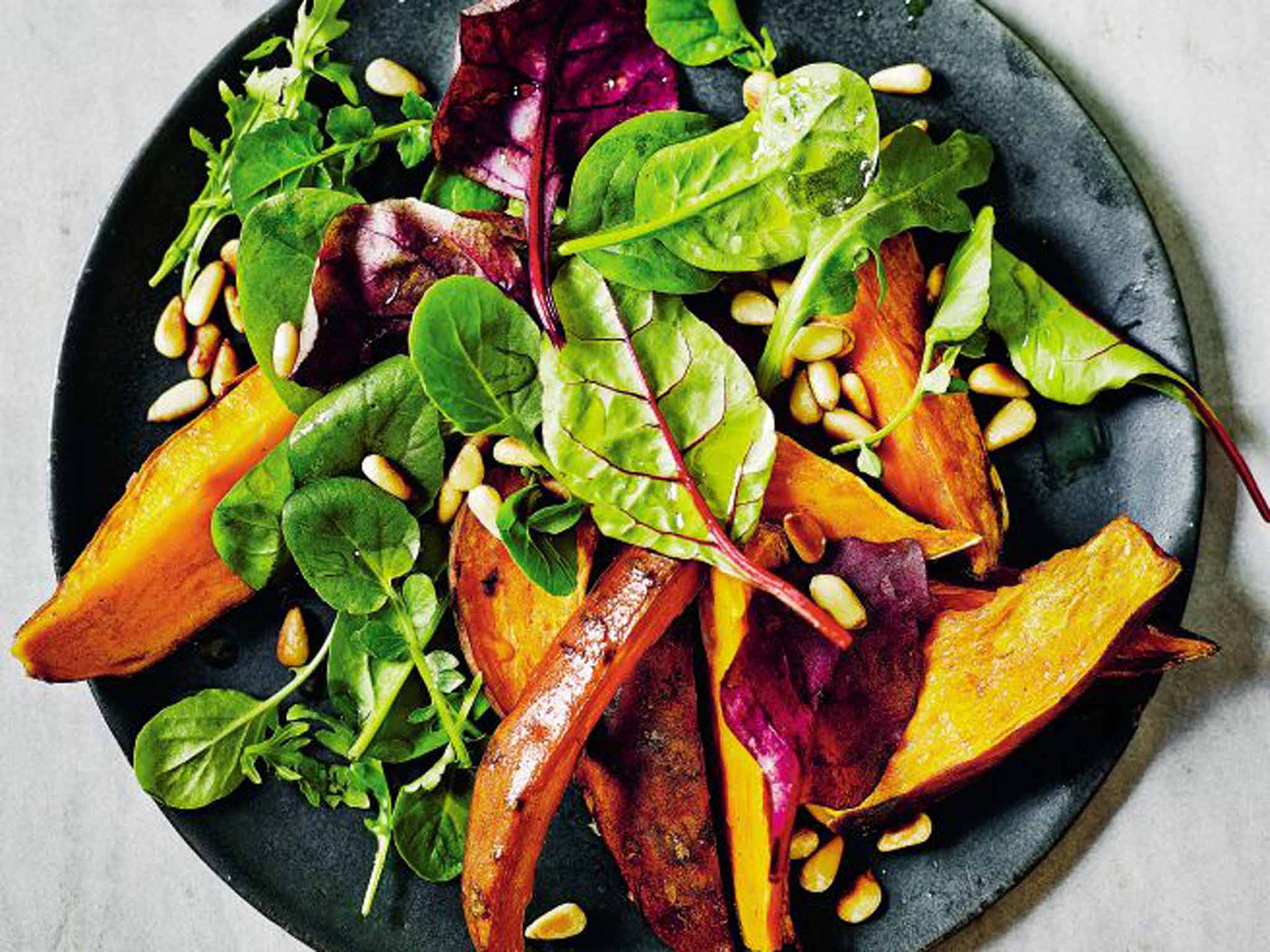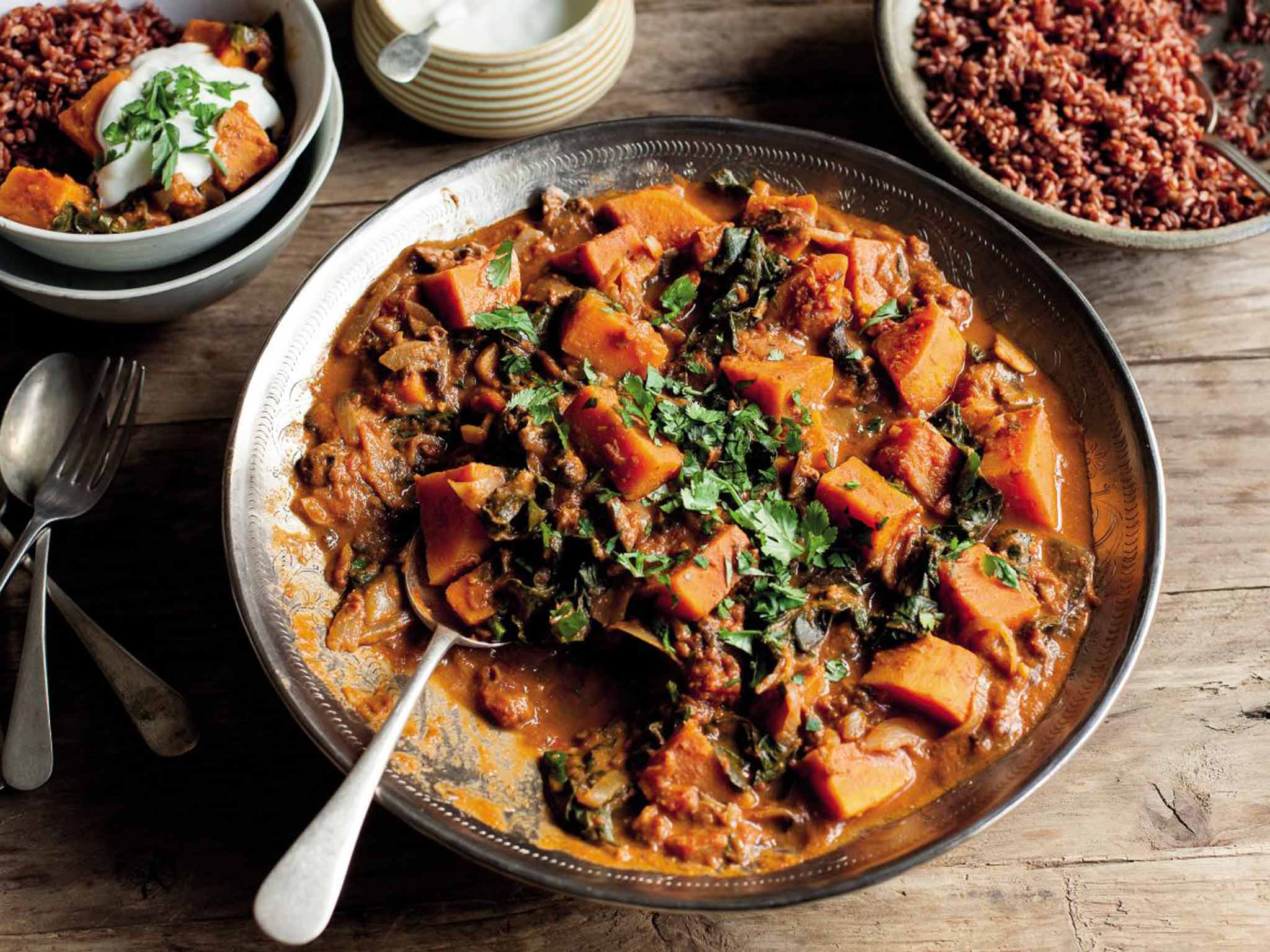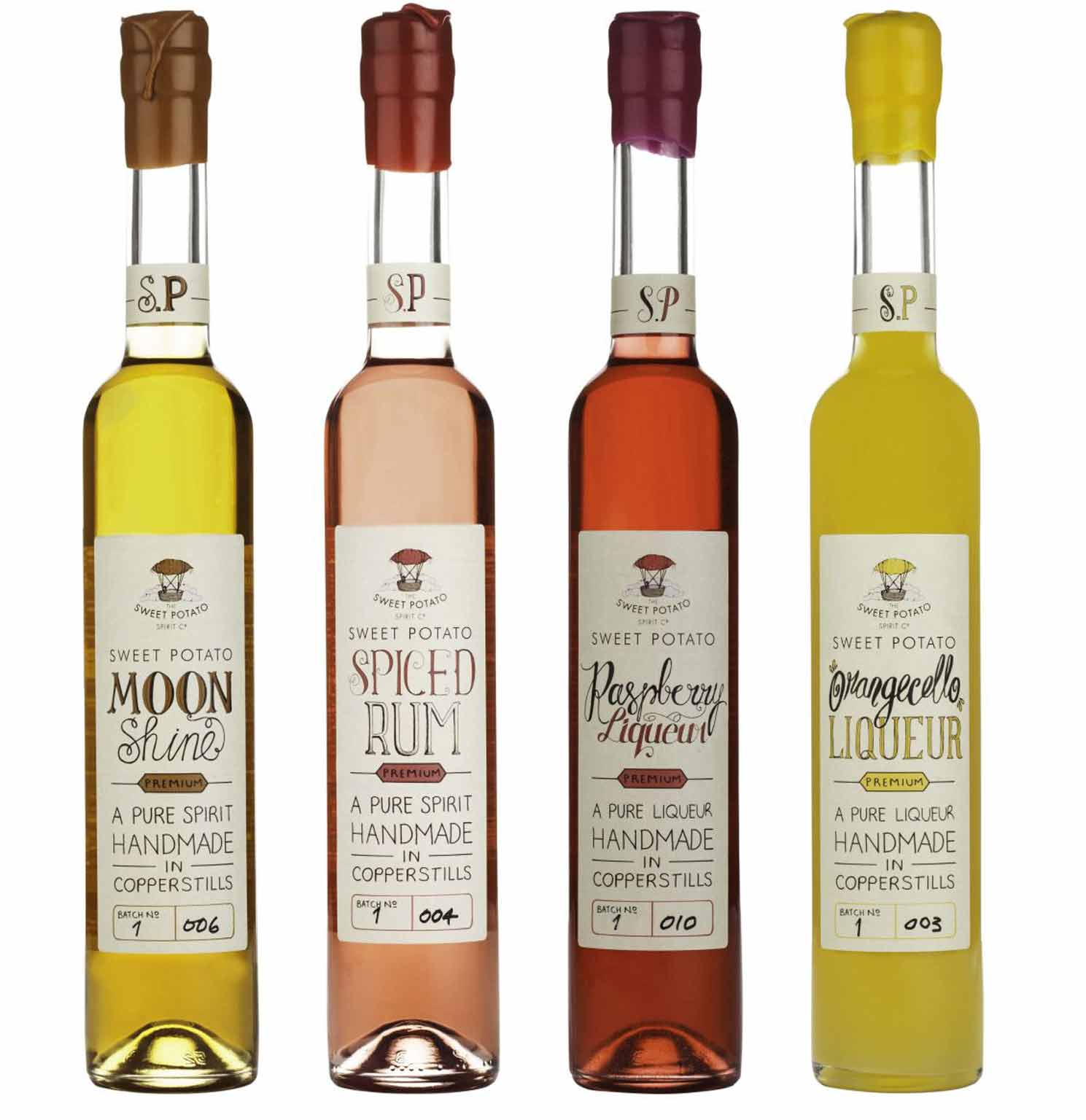Our newfound love affair with the sweet potato: Creative ideas from salad to spirits
Brits may have been late-comers to the global sweet potato party, but now we can't get enough of our traditional tuber's jazzier cousin

Your support helps us to tell the story
From reproductive rights to climate change to Big Tech, The Independent is on the ground when the story is developing. Whether it's investigating the financials of Elon Musk's pro-Trump PAC or producing our latest documentary, 'The A Word', which shines a light on the American women fighting for reproductive rights, we know how important it is to parse out the facts from the messaging.
At such a critical moment in US history, we need reporters on the ground. Your donation allows us to keep sending journalists to speak to both sides of the story.
The Independent is trusted by Americans across the entire political spectrum. And unlike many other quality news outlets, we choose not to lock Americans out of our reporting and analysis with paywalls. We believe quality journalism should be available to everyone, paid for by those who can afford it.
Your support makes all the difference.
Much of the rest of the world devours it almost daily and has done for centuries – or, in the case of Peru, millennia. Ugandans sun-dry it and serve it for breakfast with peanut sauce; the Chinese bake it and sell it in the streets; and in the United States no Thanksgiving dinner would be complete without it. Here in Britain, though, we've just discovered the sweet potato – and now we're wondering how we ever managed without it.
Taking our cue from celebrities including Yotam Ottolenghi, Jamie Oliver and the Hemsley sisters, we can't get enough of this vibrant tuber which, as well as being the perfect easy-to-cook comfort food, has the added virtue of counting as one of our five a day.
Supermarkets and growers are quickly adjusting to our newfound love affair with the sweet potato. M&S reports that sales have risen 76 per cent over the past year, and when it launched spiralised sweet potato tagliatelle in January, it sold out instantly. Sweet-potato fries, which have popped up here and there for a while, are increasingly popular. In a similar vein, Asda says sweet-potato sales have risen 46 per cent, while Waitrose says it's selling six times as many as in 2010.
Most of the sweet potatoes we buy come from the United States, Africa or Spain. Farmers struggle to grow them here as they like a climate that's dry, warm and frost-free. Recently, though, a British farmer with fields in Kent, Essex and Bedfordshire has successfully grown them for Asda by covering the crop with mulch to protect it from frost. Waitrose has recently started sourcing sweet potatoes from Jersey, famous for its Jersey Royal.

So popular has the sweet potato become that last year, for the first time, it appeared as a household staple in the Government's Basket of Goods used to gauge spending. The older generation, reared on a daily diet of white potatoes (roasted, boiled or mashed), will be choking on their Sunday roasts.
The key to the sweet potato's popularity is that it's cheap, a doddle to cook and deliciously versatile. Bake it, mash it, roast it, grate it into a rosti, or use it as the star ingredient in a stew or soup (add spices and coconut milk to give it an Asian twist). Sweet-potato fries are fast replacing ordinary ones to accompany burgers or roasts. Or if you don't fancy the deep-fried stuff, take a leaf out of Yotam Ottolenghi's book Plenty by roasting wedges with ground coriander and chilli, and serving them with a lemongrass and lime crème fraîche. Ottolenghi's NOPI restaurant in Soho also turns them into pancakes, partnered with yoghurt and date syrup, for breakfast. For novel supper dishes, try Hugh Fearnley-Whittingstall's sweet potato and peanut gratin, which includes chilli, lime and crunchy peanut butter to cut through the sweetness of the potatoes, or Dale Pinnock's Thai-style tuna and sweet potato fishcakes, a slow-burn variation on the usual fishcake fare.
Sweet potatoes are also proving manna from heaven for those shunning gluten and/or sugar, who are increasingly using them in cakes, muffins, brownies and puddings. In the US, of course, a dessert from potato is nothing new – think candied or casseroled sweet potato at Thanksgiving. Or sweet potato pie, a favourite in America's South.

A British sweet-potato importer, Garry Smith, has recently taken the humble vegetable to a higher level by coming up with a range of sweet-potato spirits (thesweetpotatospiritcompany.com). Inspired by what American moonshiners did with corn mash, he combines the rich sweet potato flesh with sugar beet, which he redistills in copper pots with kibbled sweet potato to produce a moonshine. He also uses the moonshine as the base of a raspberry liqueur and an orangecello.
The good news is that this cheery root, although higher in sugars than the regular potato, is richer in nutrients such as beta-carotene, which the body converts into Vitamin A. It's also higher in fibre and in Vitamin C, and has a lower glycemic index rate, with the result that, unlike the regular potato, it's deemed to qualify as one of our five a day.
We may be kidding ourselves, though, if we think simply changing to sweet potatoes will turn us into healthy eaters. “Switching from white potatoes to sweet potatoes is an easy win in terms of nutrition, but at the end of the day it depends on how you eat them,” says nutritionist Fiona Hunter. “If you deep-fry them or serve them with lots of butter, the health benefits become diluted. Eating sweet potatoes doesn't mean we can stop eating health-giving greens such as cabbage and kale.”
Look closer at our recent “discovery” of the sweet potato, and you may get a feeling of déjà vu. That's because the sweet potato hit our shores before the standard potato, so was actually the original potato. The first Europeans to taste sweet potatoes were members of Columbus's expedition to Haiti, in 1492. They gave them their Haitian name, batata. On reaching Elizabethan England via Spain, the sweet flavour of what was dubbed the “Spanish potato” was an instant hit, with royals and aristocrats serving it as a delicacy in puddings and pies at their banquets and street vendors selling it in crystallised slices.
Sweet potato's popularity was further enhanced by its reputation as an aphrodisiac. In his 1597 Herball, botanist John Gerard (who enjoyed his potato roasted, or boiled with prunes) suggests that it “comforts, strengthens and nourishes the body” while also “procuring bodily lust”.
When, later, the ordinary potato reached England, having been discovered by Europeans in South America in the 1530s, it was simply called “potato”, causing confusion that persists today. To differentiate them, the original orange tuber was eventually christened “sweet potato” while the new arrival became known as “potato”.
So our “discovery” of the sweet potato is in fact a rediscovery. The regular potato may have taken a mashing, but the sweet one can do no wrong, it seems. Cheap, delicious and (reasonably) healthy, it's likely to be king of the veg rack for a while yet. For now, life is sweet.
A root to suit: Try these recipe ideas
Thai-style tuna and sweet potato fishcakes by Dale Pinnock
Ingredient to serve 3-4
300g sweet potato, peeled and diced
425g tinned tuna, drained
2 eggs, whisked
2 teaspoons Thai red curry paste
25g breadcrumbs olive oil, for frying
Sea salt
Place the diced sweet potato in a saucepan, cover with boiling water and simmer until soft. Drain, transfer to a bowl and set aside to cool.
When the potatoes are cool, add a good pinch of salt and mash. Add the tuna, eggs, Thai red curry paste and breadcrumbs, mix well and form into patties.
Heat some olive oil in a frying pan, add the patties and fry gently for about 4–5 minutes on each side, until crisp and golden. Serve with a side salad.
From The Power of Three by Dale Pinnock, (Quadrille, £20)
Riverford Farm's Sweet potato, spinach & almond curry with quinoa
Ingredients to serve 2
1 onion
1 large or 2 small garlic cloves
1 chilli
Oil for frying eg sunflower or coconut
500g sweet potato
200g baby leaf spinach
1 teaspoon cardamom pods
2 teaspoons curry powder
1 teaspoon garam masala
200ml coconut milk
25g ground almonds
Salt
100g quinoa
25g flaked almonds
1 lime
150g yoghurt
Peel and finely dice the onion. Peel and finely chop or crush 1 large or 2 small garlic cloves. Halve the chilli, deseed and finely chop. Use ½ of it in the dish or all, depending on your preference for heat.
Heat 2 tbsp of oil in a large saucepan. Add the onion and fry on a low heat, stirring often, for 10 mins. If it looks like catching at any point, add a splash of water.
Meanwhile, peel and dice the sweet potato into 3cm chunks. Wash the spinach well in a bowl of cold water, then drain into a colander. Give the cardamom pods a light bash with the flat of a large knife, so they open a little. Put a pan of water on to boil.
After 10 mins, add the sweet potato, garlic, chilli, curry powder, garam masala and cardamom pods to the onion. Stir for 2 mins.
Add the coconut milk and ground almonds.
Add 200ml water, and a good pinch of salt.
Bring the pan up to a low bubbling boil and cook for 10 mins. Keep an eye on the curry as it cooks, stir now and then and add a little more water if needs be.
Meanwhile, rinse the quinoa in a sieve. Add it to the pan of boiling water and cook for 15 mins until the seeds have popped open. Put the flaked almonds in a dry frying pan and gently heat, stirring often, until golden and toasted. Transfer to a plate or small bowl.
Once the curry has cooked for 10 mins, add the spinach, in 2-3 batches, stirring each time so it wilts in. Cook for a further 5 mins or so, until the sweet potato is tender. Try a little of the curry and add a little more salt and add a good squeeze of lime juice to taste.
Drain the quinoa and serve with the curry, a dollop of yoghurt and sprinkled with the toasted flaked almonds.
Join our commenting forum
Join thought-provoking conversations, follow other Independent readers and see their replies
Comments